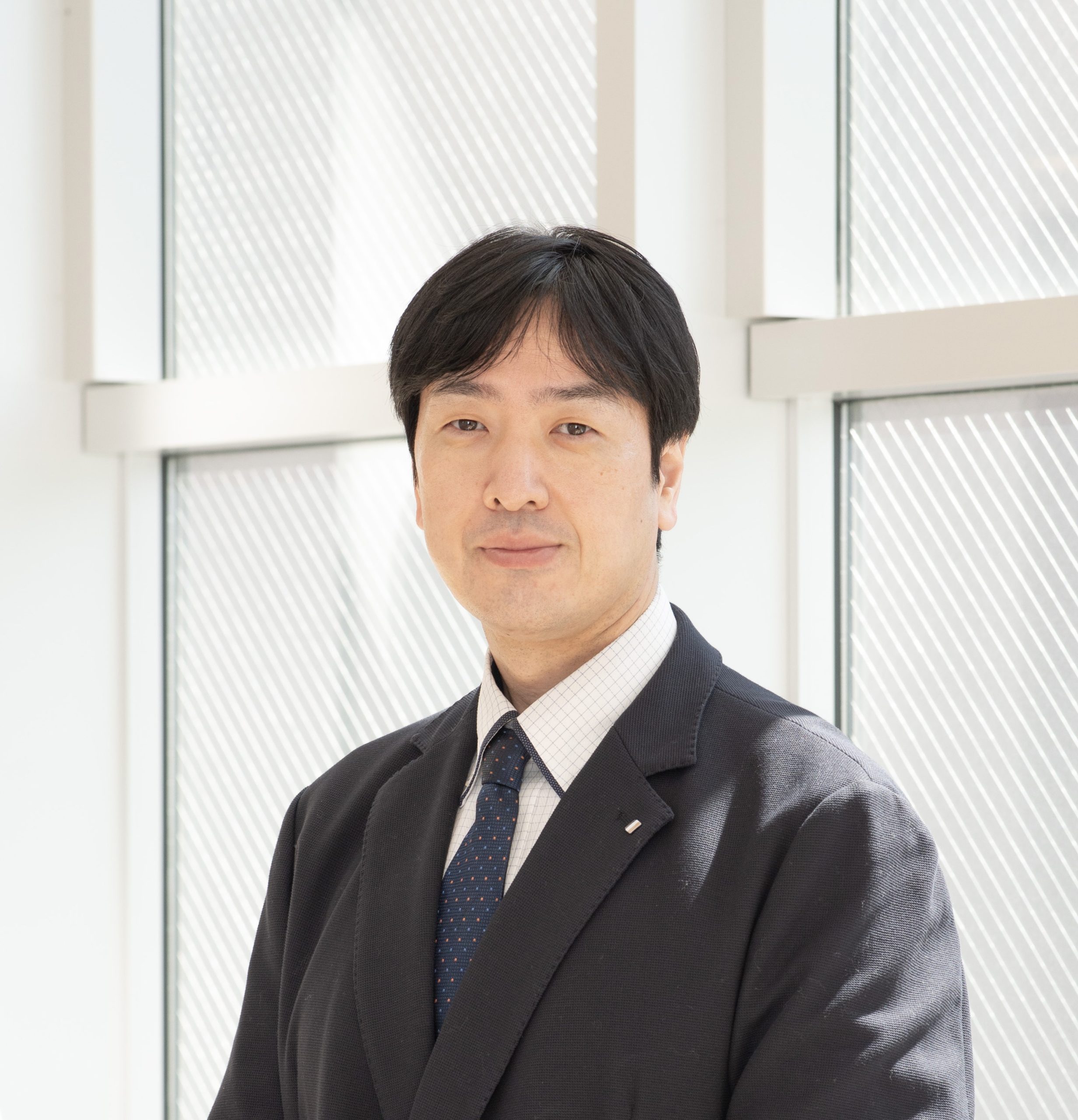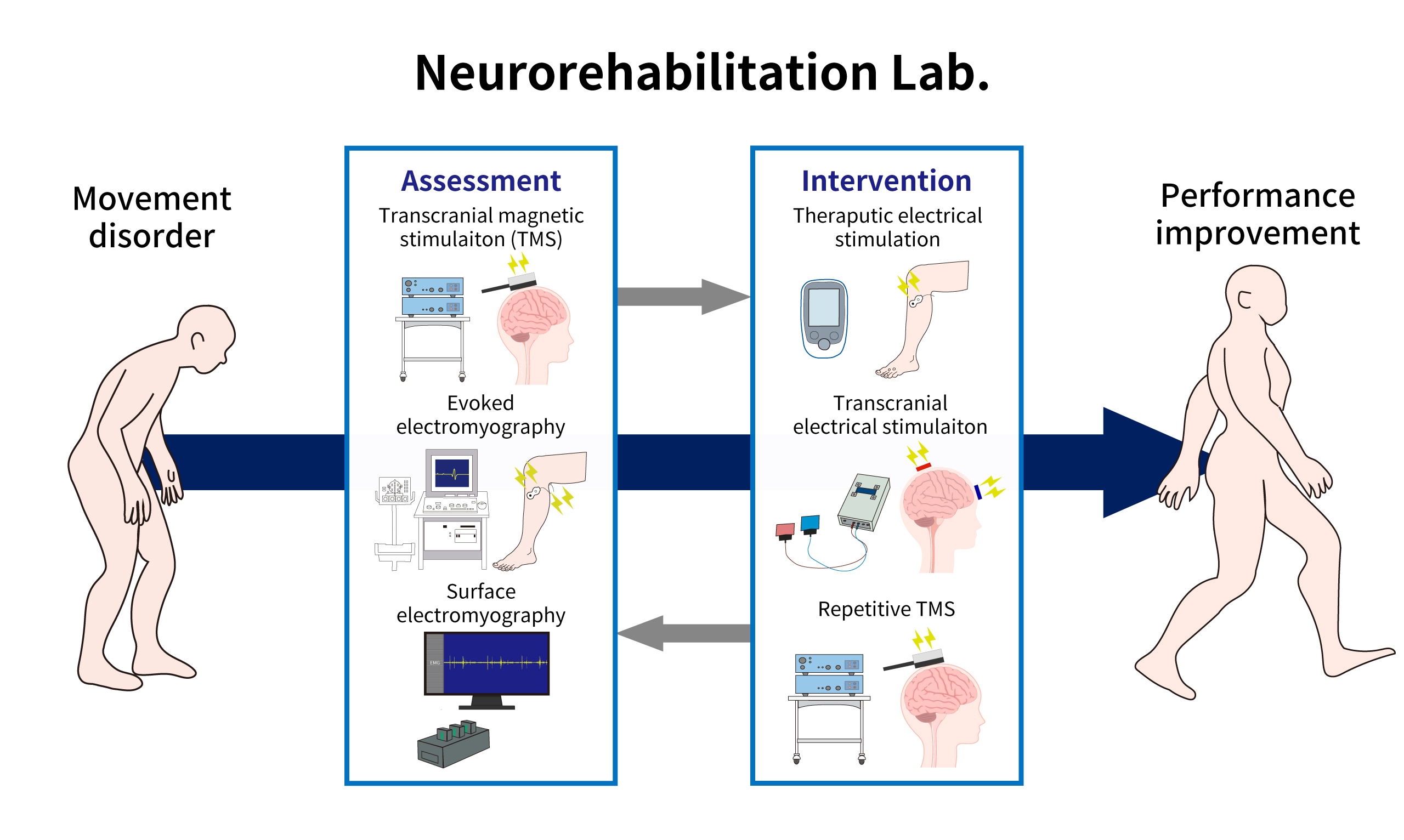
Ph.D. Professor Tomofumi Yamaguchi
Neurorehabilitation, a synergistic interplay between neuroscience, clinical neurophysiology, and rehabilitation medicine, plays an important role in enhancing therapeutic interventions for neurological disorders and in a wide range of fields, such as health maintenance and promotion.
The Neurorehabilitation Laboratory aims to develop new rehabilitative treatments to improve dysmobility after neurological disorders and investigate the effects and mechanisms. Furthermore, we lead clinical practice, research, and education in the field of rehabilitation and broadly focus on developing human resources who can lead neurorehabilitation.
Research and Education
Neurorehabilitation research to promote physical therapy for improving dysmobility after neurological disorders

The Yamaguchi lab aims to gain insight into motor learning, which is the foundation of rehabilitation, the neuroplastic changes in the central nervous system underlying motor learning, and the relationship between neuroplasticity and behavioral changes.
As the method, we use active exercise and non-invasive stimulation for the intervention (tDCS, otDCS, tACS, taVNS, rTMS, tsDCS, tSCS, TES, rPMS, etc.), as well as evaluations using neurophysiological methods (TMS, evoked EMG, surface EMG, EEG, etc.) and motion analysis methods, in healthy individuals and patients with neurological disorders. Based on this research, we develop new rehabilitative treatments and investigate the effects and mechanisms. The ultimate goal of our research is to bridge the gap between fundamental neuroscience and clinical rehabilitation to provide evidence of neurorehabilitation for neurological disorders to patients and clinicians.
Human resources development to lead neurorehabilitation research and practice
The Yamaguchi lab aims to develop researchers and clinicians who can practice fundamental and clinical research based on clinical questions, have the insight to apply the knowledge gained from fundamental and clinical research practice to clinical rehabilitation, and can bridge the gap between fundamental and clinical research.
Recent Publications
- Katagiri N, Saho T, Shibukawa S, Tanabe S, Yamaguchi T. Predicting interindividual response to theta burst stimulation in the lower limb motor cortex using machine learning. Front Neurosci. 2024;18:1363860.
- Koseki T, Kudo D, Yoshida K, Nito M, Takano K, Jin M, Tanabe S, Sato T, Katoh H, Yamaguchi T. Combined neuromuscular electrical stimulation and transcutaneous spinal direct current stimulation increases motor cortical plasticity in healthy humans. Front Neurosci. 2023;16:1034451.
- Takano K, Katagiri N, Sato T, Jin M, Koseki T, Kudo D, Yoshida K, Tanabe S, Tsujikawa M, Kondo K, Yamaguchi T. Changes in Corticospinal Excitability and Motor Control During Cerebellar Transcranial Direct Current Stimulation in Healthy Individuals. Cerebellum. 2023;22(5):905-914.
- Kudo D, Koseki T, Katagiri N, Yoshida K, Takano K, Jin M, Nito M, Tanabe S, Yamaguchi T. Individualized beta-band oscillatory transcranial direct current stimulation over the primary motor cortex enhances corticomuscular coherence and corticospinal excitability in healthy individuals. Brain Stimul. 2022;15(1):46-52.
- Yamaguchi T, Svane C, Forman CR, Beck MM, Geertsen SS, Lundbye-Jensen J, Nielsen JB. Transcranial Alternating Current Stimulation of the Primary Motor Cortex after Skill Acquisition Improves Motor Memory Retention in Humans: A Double-Blinded Sham-Controlled Study. Cereb Cortex Commun. 2020;1(1):tgaa047
Laboratory
Professor: Tomofumi Yamaguchi
E-mail: yamaguchi.tomofumi.3i@kyoto-u.ac.jp
TEL: +81-75-751-3963
Assistant Professor: Mayu Akaiwa
E-mail: akaiwa.mayu.8r@kyoto-u.ac.jp
TEL: +81-75-751-3964
